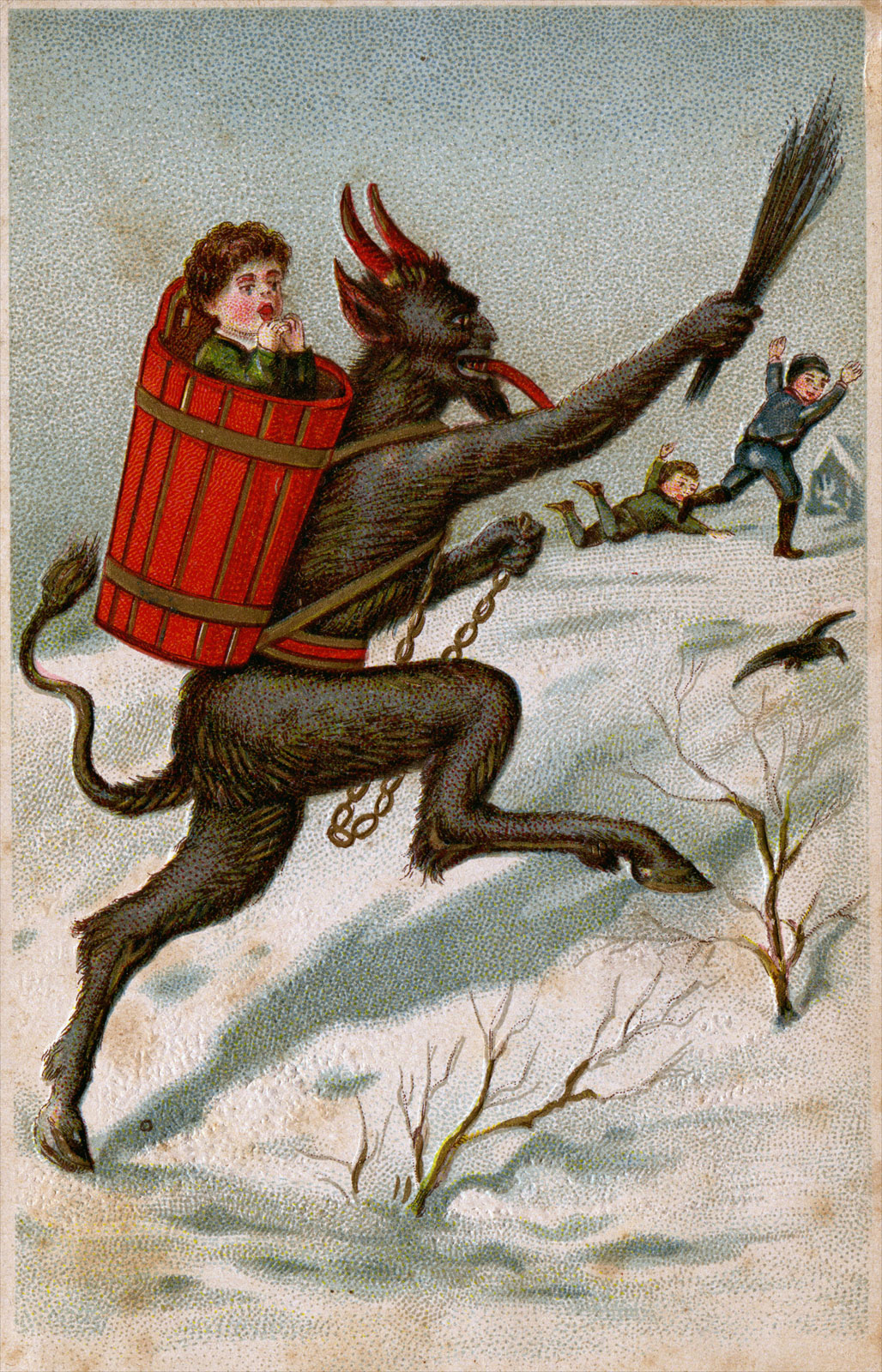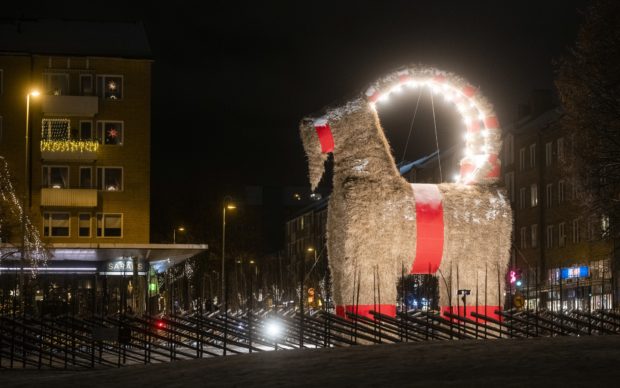Weird and wonderful Christmas customs across the globe

FILE PHOTO: At Manila’s Dapitan district, it’s already Christmas. Tucked in one of its business hubs is a web of streets and alleys lined with stalls and bazaars selling Christmas trees, mechanical Santas, miniature scenes of the Nativity, and an array of twinkling lights. PHOTO: CRISTINA MENINA FOR THE STRAITS TIMES
MANILA, Philippines—Christmas is finally right around the corner!
The COVID-19 pandemic has changed the way the world celebrated Christmas last year. Many traditions and festivities were canceled for the safety of everyone, especially during the holiday season.
This did not mean, however, that all the fun and excitement during Christmas had to be stripped away.
If you’re looking for a unique way to celebrate Christmas this year—or perhaps for the following years when it is already safe to celebrate as we used to prior to the pandemic—here are some of the weird but wonderful Christmas traditions across the globe.
Austria, Germany
Most of us are familiar with St. Nicholas, patron saint of children, who is one of the most popular symbols of Christmas. But did you know he has a sinister companion?
Krampus, whose name came from the German word krampen which means claw, is said to be the son of Hel—the god of the underworld in Norse mythology. The mythic beast—with horns, dark hair, sharp fangs and a long tongue—is the complete opposite of St. Nicholas.
While the patron saint, also known as Santa by many, is known for being generous and rewarding nice children with presents, Krampus, on the other hand, roams around with a chain, bells, and a bundle of branches and sticks to beat naughty children.
Legend says that the Christmas beast is said to eat naughty children. Other sources believe Krampus would “swat ‘wicked’ children, stuff them in a sack, and take them away to his lair,” the underworld.
According to National Geographic, the folklore is part of a “centuries-old Christmas tradition in Germany, where Christmas celebrations begin in early December.”
Both St. Nicholas and Krampus are said to appear on the evening of Dec. 5, dubbed as Krampusnacht or “Krampus Night,” said Encyclopedia Britannica.
Italy
While Austria and Germany have Krampus for their Christmas festivities, Italy has Befana, who was described in old tales as an “old ugly woman, dressed in dark rags”—said the website italyheritage.com.
However, unlike Krampus who punishes children, Befana is known to fill children’s stockings with gifts on Epiphany (Twelfth Night)—the festivity following Christmas, which commemorates the visit of the three wise men to the Baby Jesus on Jan. 6th.
According to legend, Befana—an old woman with a broom—met the three wise men and asked them where they were going. They told her that they were on their way to Bethlehem to visit a newborn baby, and invited her to come along.
However, Befana declined the invitation, saying she was too busy cleaning to accompany them.
“When she realized that the baby was the Redeemer that all the world had been waiting for, her regret was so great that she continues to wander about Italy and at the Epiphany (January 6, when the Wise Men finally found the Child Jesus), begins rewarding good children and “disappointing those who were bad.”
Ukraine
When it comes to decorating a Christmas tree, people mostly use sparkling tinsels, lights, and colorful ornaments. In Ukraine, people feature some unusual ornaments, which are usually associated with Halloween rather than Christmas—cobwebs and spiders.
The story behind it, however, is not as sinister as one might think.
According to folklore, there was a poor widow who could not afford to decorate a tree for her children—the very same pine tree that they all watched to grow outside their home. The children and the widow accepted their fate and went to bed on Christmas Eve.
However, the spiders in their house overheard the sad story and took pity on the family. The spiders spun beautiful and intricate webs all over the Christmas tree overnight, which the children and the widow saw the morning after.
In Ukrainian culture, spiders’ webs are also considered to be lucky.
Germany
Looking for more unique Christmas tree decor ideas? Why not try hanging a discreet pickle ornament this year?
According to the website german-way.com, using glass Christmas pickle ornament is known to be a long tradition in Germany. Different variations of the legend behind the pickle ornament can be found on many websites and printed ads.
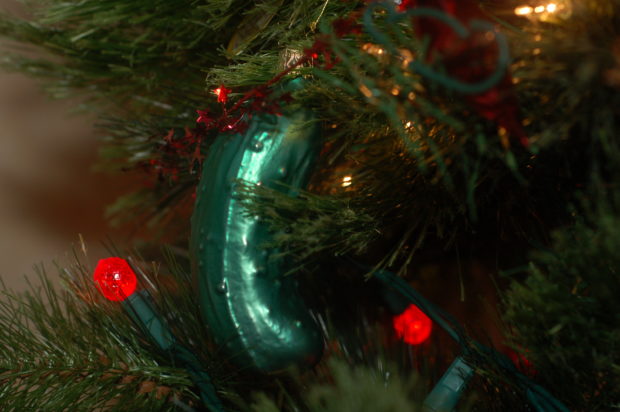
A plastic representation of a pickle is commonly hung in Christmas trees in Germany. Photo by Tricia via Flickr
“The pickle ornament is very special to German families. After they decorate their tree, parents hide the pickle ornament among the boughs,” an old ad stated.
“When the children see the decorated tree for the first time, they hunt for the hidden ornament knowing that the lucky child who finds it will receive an extra little gift from St. Nicholas,” it added.
Spain
Speaking of Christmas decors, many countries across the world display nativity scene figurines—which represent the birth of infant Jesus—as part of their Christmas culture and tradition.
In the Catalan region of Spain, the nativity scenes often have a very unusual addition. Aside from the key figures—Mary, Joseph, baby Jesus, angels, animals, etc.—the caganer, a figure characterized by its cheeky position, is frequently included in the scene.
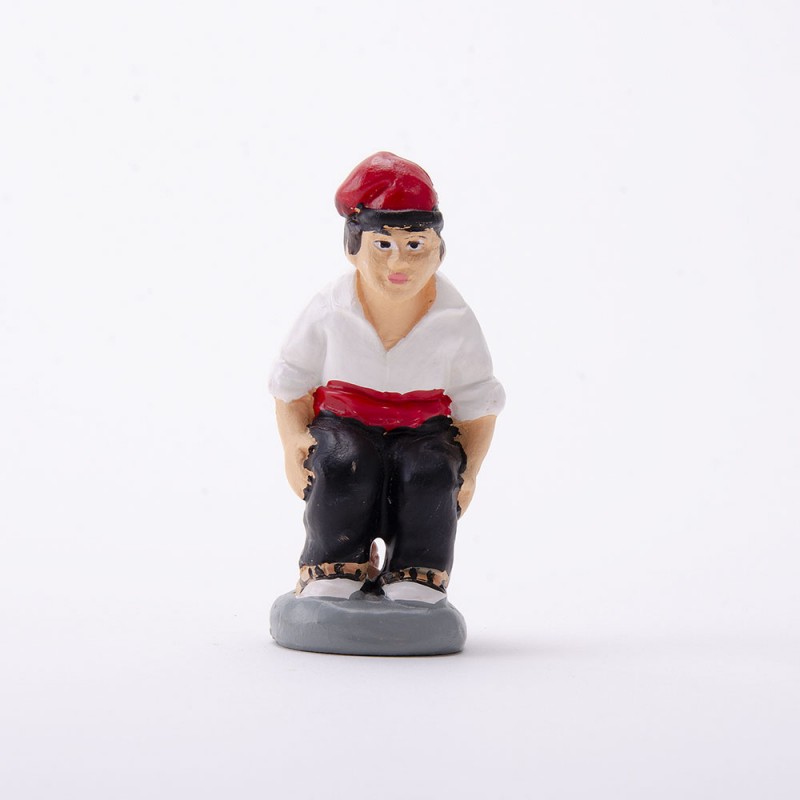
This figurine of a caganer often becomes part of the nativity scene in the Catalan region of Spain. Photo from caganer.com.
“Amid this tradition, we usually spot a crouched man more or less hidden answering the call of Nature outdoors. It is said that not exhibiting him brings misfortune since his feces fertilize the ground and also bring luck and happiness for the year ahead,” explained the website caganer.com—which is owned by a family-based company that produces the peculiar, yet traditional Catalan figure.
“This is the reason why all the versions you can find on our website pay tribute to what they represent while wishing them well,” it added.
“Initially, the intention was to illustrate the traditional elements that were part of this moment —shepherds, angels, the Three Wise Kings, poultry, a herdboy, the river, a caganer— in order to bring this world of happiness and Christmas to the everyday life of the families.”
Mexico
If Spain has caganer, the Mexican city of Oaxaca makes use of large radishes as Christmas decor.
For over a century now, farmers in Oaxaca grow oversized radishes and carve them to depict the nativity scene. Farmers, with their own radish masterpiece, compete in a contest usually held on Dec. 23—also known by locals as the Night of the Radishes (Noche de Rábanos).
The prizes for the winning radish sculptures are usually cash and a chance to be photographed and published in the paper.
Iceland
In Iceland, legend gives the normal act of shopping for new clothes during Christmas a whole new meaning. According to stories, a giant cat roams around the snowy countryside during the Christmas season.
“Traditionally, farmers would use the Yule Cat as an incentive for their workers – those who worked hard would receive a new set of clothes, but those who didn’t would be devoured by the gigantic cat-like beast,” said the website holidayextras.com.
“Today it is customary for everyone in Iceland to get new clothing for Christmas to avoid an unsavory demise,” it added.
Aside from new clothes, people in Iceland follow a Christmas tradition involving new books.
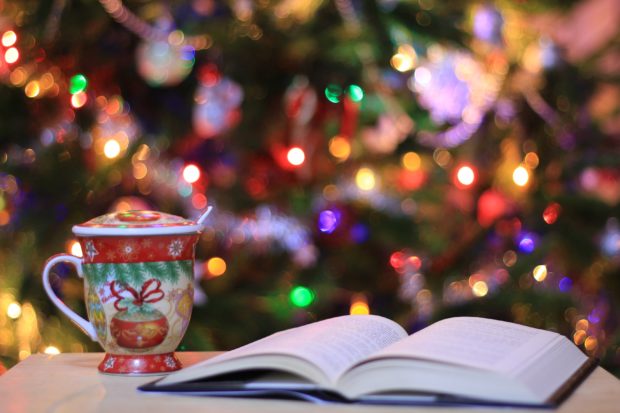
Books are the stars of Iceland’s Jolabokaflod, or Christmas Book Flood, a Christmas Eve tradition. Photo by Andreea Radu via Unsplash
Jolabokaflod or “Christmas Book Flood” is an Icelandic Christmas Eve tradition, where families exchange brand new books with one another and spend the rest of the evening reading.
“The culture of giving books as presents is very deeply rooted in how families perceive Christmas as a holiday,” Kristjan B. Jonasson, president of the Iceland Publishers Association, told the National Public Radio (NPR).
“Normally, we give the presents on the night of the 24th and people spend the night reading. In many ways, it’s the backbone of the publishing sector here in Iceland,” Jonasson added.
Sweden
Sweden has many odd Christmas traditions, but one tradition stands out from the rest.
The Yule Goat is a Swedish Christmas tradition that dates back to the 11th century. According to stories, it is considered as a companion of Saint Nicholas and has become the giver of gifts.
Nowadays, the yule goat is commonly seen as a Christmas tree ornament.
In 1966, a giant version of the traditional Swedish Christmas straw goat was erected in the town of Gävle, Sweden.
“The objective was to attract customers to the shops and restaurants in the southern part of the city. On the first Sunday of Advent 1966, the huge goat was placed at the Castle Square,” said the town’s official website.
“Since then, the Gävle Goat has been a Christmas symbol placed in the same spot every year. Today he is world-famous. The goat is the world’s largest straw goat and made it to the Guinness Book of Records for the first time in 1985,” it added.
Czech Republic
Hoping to find love on Christmas?
In the Czech Republic, there is a tradition wherein unmarried Czech women stand with their back to the door and toss one of their shoes over their shoulders.
Folklore says that if the shoe lands with its toe facing towards the door, the woman will get married in the following year. On the other hand, if the heel points toward the door, the woman will remain single.
Norway
For many parts of the world, December is considered the most festive and joyful time of the year. However, in Norway, the holiday seasons have a darker side.
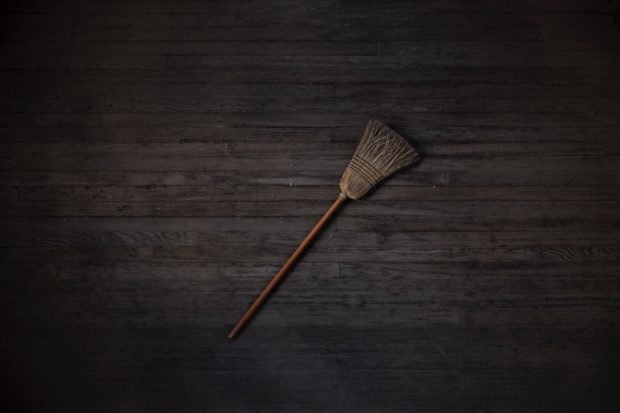
Brooms like this are hidden during the holidays in Norway to prevent their use by witches according to folklore. Photo by Neal E. Johnson via Unsplash
In Norwegian folklore, mischievous spirits and witches are said to appear on Christmas Eve to spread mischief and tomfoolery. Since brooms are often depicted as witches’ preferred mode of transportation, some Norwegian families have made it a Christmas tradition to hide away any broom in their households.
TSB
For more news about the novel coronavirus click here.
What you need to know about Coronavirus.
For more information on COVID-19, call the DOH Hotline: (02) 86517800 local 1149/1150.
The Inquirer Foundation supports our healthcare frontliners and is still accepting cash donations to be deposited at Banco de Oro (BDO) current account #007960018860 or donate through PayMaya using this link.

